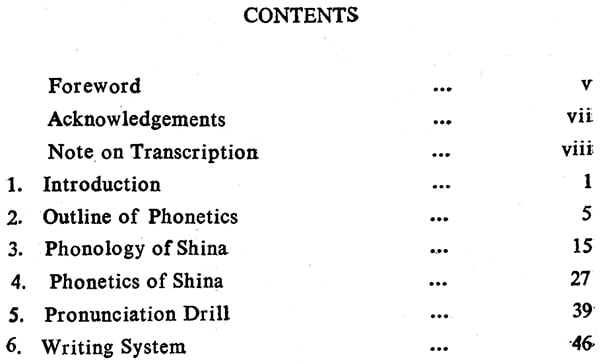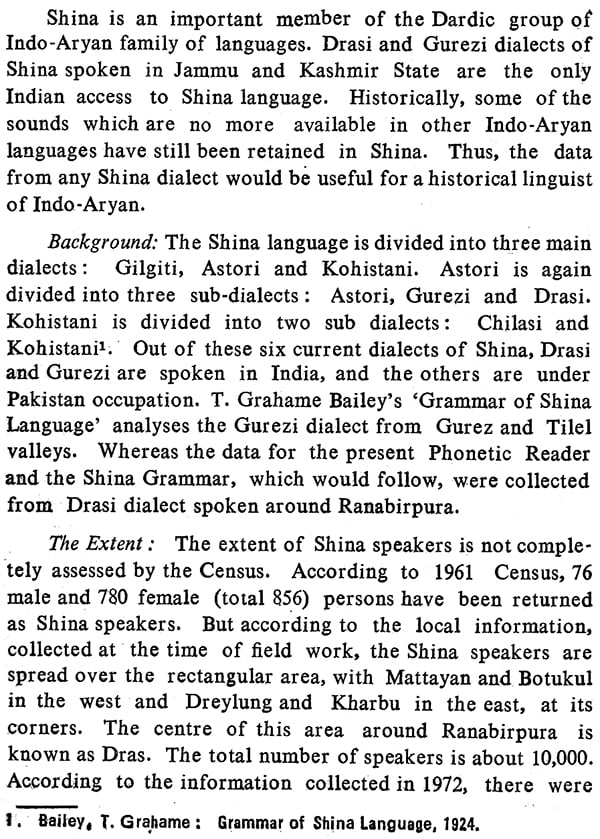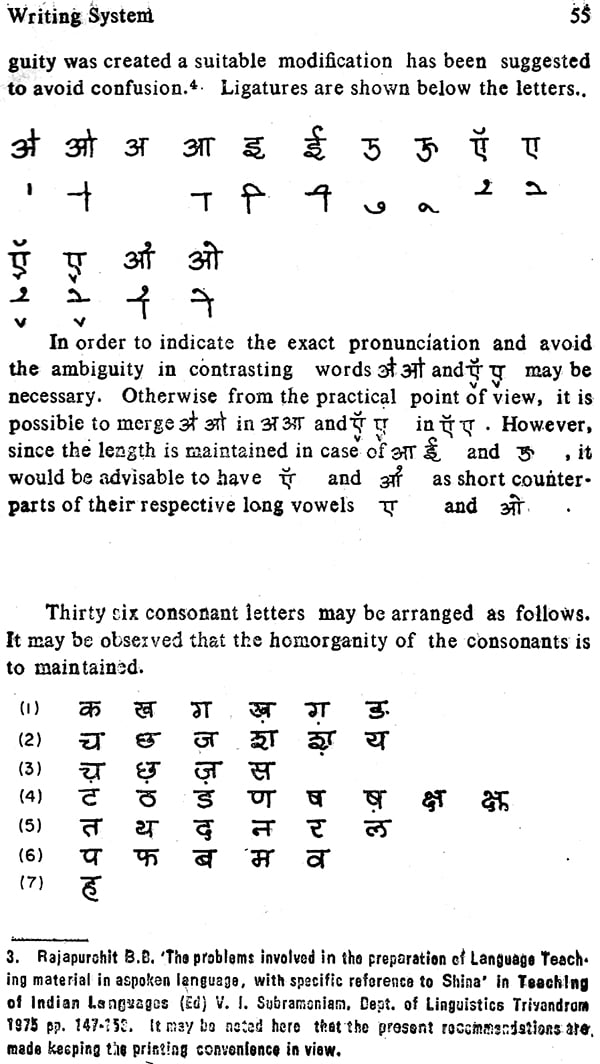
Shina Phonetic Reader (An Old and Rare Book)
Book Specification
| Item Code: | NAW462 |
| Author: | B. B. Rajapurohit |
| Publisher: | Central Institute Of Indian Languages, Mysore |
| Language: | English |
| Edition: | 1983 |
| Pages: | 54 |
| Cover: | PAPERBACK |
| Other Details | 8.50 X 5.50 inch |
| Weight | 90 gm |
Book Description
The Central Institute of Indian Languages is engaged in the description and teaching of, material production in and inter-disciplinary research on Indian languages. The ultimate aim in all these activities is to help the development of Indian languages. The research results and the expertise developed at the Institute are disseminated through conferences and workshops and also through its publications. The publications are brought out in various series and the Phonetic Reader Series contains descriptions of the phonetics of the Indian languages. They are called Readers not in the sense that they compile texts of phonetic transcription but in the sense that they can be used in teaching the language. Hence it contains a chapter on phonetic drills. They are also meant as a guide for the orthography of the language and one chapter suggests system for adapting a script in the case of unwritten languages or modifications on linguistic grounds in the case of languages which have a writing system recently developed. The Readers are also meant to throw light on the phonetics of Indian languages and hence detailed description of the sounds of the language. It is hoped that the Phonetic Readers will be found useful by the learners, teachers and planners of the language as well as the linguists interested in it.
There is a great need for the Phonetic Readers for the tribal languages which have been little described. The phone- tic readers in tribal languages form part of the package of materials on the tribal languages which consists of a grammar, a multilingual dictionary, a collection of folk literature and primers.
The Phonetic Reader gives a general description of the human speech sounds and the organs. of speech that produce them, a detailed description of the production of the sounds of a particular language, drills to practise those sounds, the phonemic inventory and an orthography best suited for that language. The general description of the human speech sounds introduces and explains the technical terminology. The description of the sounds of the language under consideration is made lucid enough for a person not trained in linguistics to understand even, perhaps, at the risk of being repetitive at times. After describing how each sound is produced, the technical name of the sound is given for identification and its distribution in a word. This is followed, wherever possible, by a comparison with the similar sound in other languages assumed to be known to the prospective users of the book. Then comes the list of words containing the sounds. This section will help the reader to identify the sounds of the language he is learning and to reproduce them in isolation and in words. Words for drill are given for the learner to practise correct pronunciation and to differentiate between similar sounds.
The script suggested is normally the script of the majority or the official language of the region. This is to take the barrier of script out for the learner from the majority group and more importantly to ease the switch over of the tribal children from their mother tongue to the majority language. at some point in their schooling. This will also make illiterate the tribal adults who already speak the majority language when they are taught reading and writing of their mother tongue. The modifications given are only suggestive and they take into consideration the conventions of the adopted script, the practices already in vogue if the script is being used by the language-under consideration and the technological convenience.
Except when the writer himself is the native speaker of the language analysed, data are collected in the field primarily from one informant and then checked with a few other informants. Care is taken to transcribe the sounds as accurately as possible. Still some inadvertent lapses might remain. There might still be room for improving the presentation of the material. Comments and suggestions passed on to us will be useful to improve our future publications in the series. The quality of the phonetic descriptions perhaps could be improved to satisfy a phonetician and we hope that with more field experience we will be able to achieve it. The Institute also plans to select a few phonetically interesting languages and give a detailed phonetic description.
**Contents and Sample Pages**










